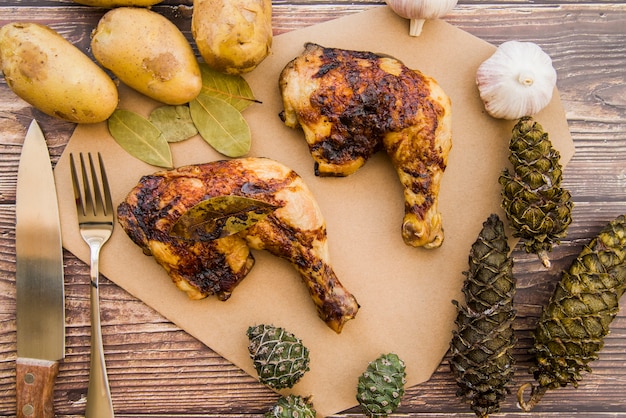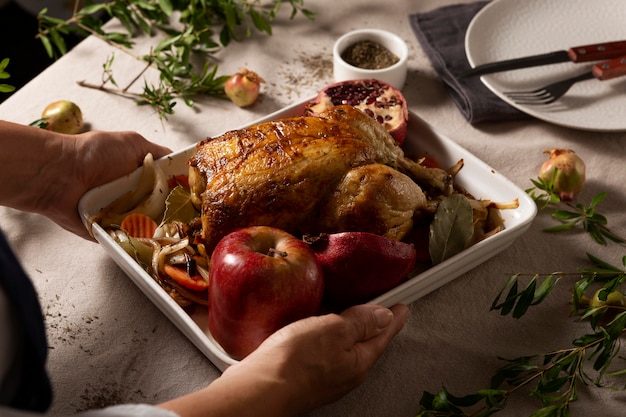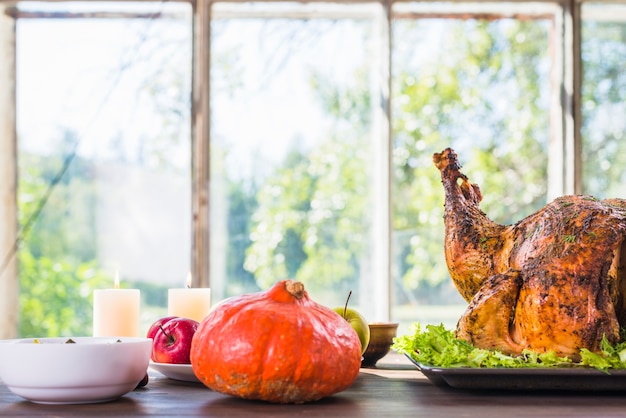Let's talk pheasant. This isn't just another bird on your dinner plate. It's a real treat, a taste of the wild that's been enjoyed for centuries. Its flavour is incredible, with a depth and richness that's just begging to be explored. Now, I'm not going to lie, it's not the easiest bird to prepare – you need a bit of patience and attention to detail. But trust me, the rewards are well worth the effort. I've been cooking pheasant for years, and I've learned a thing or two along the way. So, grab your favourite apron, sharpen those knives, and let's get started!
(Part 1) Selecting the Perfect Pheasant

Choosing the right pheasant is the first step on your culinary journey. Now, I'm a bit of a snob when it comes to my birds. You'll find me at the local game dealer, carefully selecting each pheasant, looking for a few key things.
1. A Fresh Bird is a Must
The first thing to look for is freshness. You want a pheasant with bright, clear eyes and a firm, plump body. Avoid any that have a dull, dry skin, or a foul smell. Remember, the fresher the bird, the better it will taste.
2. Size Matters - Choose the Right Bird for Your Needs
The size of your pheasant will depend on the number of people you're feeding. For two people, a bird weighing between 1.5 and 2 pounds is ideal. If you're cooking for more, go for a larger bird. I usually aim for a bird with a weight of around 2.5 pounds for a family of four. Don't worry about getting a bird that's a little too big, there are plenty of delicious ways to use the leftovers!
3. Know Your Source - A Look into the Pheasant's Origins
It's always good to know where your pheasant has come from. Ask your game dealer about its source and how it was raised. A good dealer will be happy to tell you all about it. Personally, I love to get wild pheasant. The taste is incredible! It's got a real earthy flavour, that's hard to find elsewhere. But, if you're feeling adventurous, you can also try farmed pheasant, which has a milder flavour.
(Part 2) Preparing the Pheasant: A Step-by-Step Guide

Once you've selected your perfect bird, it's time to prepare it for cooking. This might seem a bit daunting, but don't worry, it's really quite simple. I've learned a few tricks over the years that have made the process much easier.
1. Plucking or Skinning? The Choice is Yours
You have two main options when it comes to preparing the pheasant: plucking or skinning. Personally, I prefer plucking. It's a little more work, but I find it gives the pheasant a more rustic look and keeps the flavour of the skin intact. The skin adds a great crispy texture, especially when roasted. If you're short on time, skinning is perfectly acceptable. Just make sure you remove the skin completely, leaving you with just the breast meat.
2. The Art of Gutting: A Necessary Step
Now, this is where things get a little bit trickier. You'll need to gut the pheasant, removing its internal organs. It's not as difficult as it sounds, and it's really important to do it properly. First, you'll need to cut a small hole in the pheasant's belly, then use your fingers to pull out the innards. It's best to work over a bowl to catch any bits that fall out. Once you've removed the innards, rinse the bird thoroughly inside and out.
3. The Importance of Resting: Allowing Flavours to Develop
Once you've prepped the pheasant, don't rush into cooking it. Let it rest in the fridge for a few hours, covered, to allow the flavours to develop. This will make a real difference in the final taste. The rest allows the meat to tenderize and for the flavours to become more pronounced.
(Part 3) Mastering the Art of Cooking Pheasant: A Variety of Methods

Now comes the fun part: cooking the pheasant! You've got loads of options here, from roasting to grilling to braising. I love experimenting with different methods, and I've found that each one brings out a unique flavour in the bird.
1. Roasting: A Classic for a Reason
Roasting is a classic way to cook pheasant, and for good reason. It produces a beautifully cooked bird with a crispy skin and juicy meat. For a basic roast, you'll need to preheat your oven to 350 degrees fahrenheit. Then, rub the pheasant with olive oil, salt, and pepper. Place it in a roasting pan, and roast it for about 1 hour and 15 minutes, or until the internal temperature reaches 165 degrees Fahrenheit. You can also stuff the bird with herbs and vegetables, which will add another layer of flavour.
2. Grilling: For a Smoky Flavour
If you want a more intense, smoky flavour, grilling is the way to go. You can grill pheasant over charcoal or gas, but I prefer the charcoal method. It gives the bird a lovely smoky aroma. Start by seasoning the pheasant with salt, pepper, and your favourite herbs. Grill the pheasant over medium heat for about 15 minutes per side, or until cooked through. Don't forget to baste the bird with a marinade or sauce during grilling to keep it moist.
3. Braising: Tender and Flavourful
Braising is a great way to cook pheasant if you want a tender, flavorful dish. You'll start by browning the pheasant in a pan over high heat, then you'll transfer it to a dutch oven. Add vegetables like onions, carrots, and celery, and pour in some wine or stock. Bring to a boil, then reduce the heat to a simmer and cover the pot. Let the pheasant simmer for about 1 hour and 30 minutes, or until it's fall-off-the-bone tender. Braising is especially good for older, tougher birds, as it helps to break down the tougher muscle fibres.
(Part 4) Delicious Accompaniments for Your Pheasant: Balancing Flavours
Now, no pheasant dish is complete without some delicious accompaniments. I always like to keep things simple, but there's plenty of room for creativity.
1. Classic Sides: Potatoes and Vegetables - A Perfect Pair
For a classic pairing, you can't go wrong with roasted potatoes and seasonal vegetables. I love to roast my potatoes with rosemary and garlic for a flavour explosion. As for vegetables, you can use anything from carrots and parsnips to Brussels sprouts and green beans. Just make sure you roast them until they're tender and slightly caramelized. This will create a delicious contrast in textures and flavours.
2. Savoury Sauces and Gravies: Adding Depth and Richness
A good sauce or gravy can elevate your pheasant to a whole new level. For a simple sauce, try reducing the pan juices from your roasted pheasant with some red wine or stock. For a richer gravy, add some flour to the pan juices and whisk it all together. If you're feeling adventurous, you can also make a sauce with cranberries or other fruits. A touch of sweetness can really complement the gamey flavour of pheasant.
3. Fresh and Crunchy Salads: Balancing Richness with Freshness
To balance out the rich flavours of the pheasant, serve it with a fresh salad. A simple green salad with vinaigrette dressing is always a good choice. For a bit more flavour, try adding some roasted nuts or dried fruit. The salad will provide a light and refreshing contrast to the hearty pheasant.
(Part 5) Serving and Enjoying Your Pheasant Feast: Presentation Matters
Finally, it's time to serve your pheasant feast. I always like to create a beautiful presentation, adding a touch of elegance to the table.
1. The Perfect Presentation: A Visual Treat
If you've roasted the pheasant whole, you can carve it at the table. Otherwise, you can serve it in individual portions. Arrange the pheasant on a platter, with the accompanying sides arranged neatly around it. You can even create a decorative border with the vegetables to make the dish more visually appealing.
2. A Touch of Elegance: Garnishing for a Special Touch
To add a touch of elegance to your pheasant feast, you can garnish the dish with fresh herbs, like parsley or thyme. You can also use edible flowers, like pansies or violas, for a pop of colour. These little touches can really elevate the dish and make it look more special.
3. Enjoy the Flavours: Savoring the Moment
Now it's time to enjoy the fruits of your labour. Take a bite of the pheasant, and savour the delicate flavour. Pair it with a glass of your favourite wine, and enjoy the company of your loved ones.
(Part 6) Tips and Tricks for Pheasant Perfection: Elevating Your Cooking
Now that we've covered the basics, let's dive into some insider tips that will help you take your pheasant cooking to the next level.
1. The Power of Marinades: Infusing Flavour and Tenderness
Marinating your pheasant before cooking it is a great way to add extra flavour and tenderness. You can use a simple marinade of olive oil, lemon juice, and herbs, or get more creative with ingredients like garlic, ginger, or even honey. Just make sure to marinate the pheasant for at least 30 minutes, or even overnight for maximum flavour. A marinade will help to break down the tougher muscle fibres in the pheasant, making it more tender and flavourful.
2. Don't Overcook It: A Key to Juicy Meat
Pheasant is a lean bird, so it's easy to overcook it. Overcooked pheasant can be dry and tough, so it's important to cook it to the right temperature. Use a meat thermometer to check the internal temperature. The pheasant is done when the internal temperature reaches 165 degrees Fahrenheit.
3. Resting is Key: Allowing Juices to Redistribute
After cooking, let the pheasant rest for at least 10 minutes before carving it. This will allow the juices to redistribute throughout the meat, resulting in a more tender and juicy bird. This is a crucial step that many people skip, but it makes a real difference in the final texture of the meat.
4. Use the Bones to Make a Stock: Maximising Flavour
Once you've finished eating, don't throw away the bones! You can use them to make a delicious pheasant stock. Simply roast the bones in the oven until they're golden brown, then simmer them in water with vegetables and herbs for a few hours. Strain the stock and use it to make soups, sauces, or risottos. It's a great way to make the most of your pheasant.
(Part 7) Beyond the Basics: Creative Pheasant Recipes: Exploring New Flavours
Now, let's explore some more creative and unique pheasant recipes that will showcase the versatility of this delicious bird.
1. Pheasant with wild mushrooms and Thyme: A Savoury Delight
This dish is a real treat, combining the earthy flavour of pheasant with the rich aroma of wild mushrooms and the fragrant touch of thyme. You'll need to brown the pheasant in a pan, then add the mushrooms, thyme, and some white wine. Cook it all together until the mushrooms are tender and the sauce is reduced. Serve the pheasant with mashed potatoes or polenta for a hearty and satisfying meal. The combination of wild mushrooms, thyme, and pheasant creates a symphony of earthy and savory flavours that will tantalise your taste buds.
2. Pheasant with Cranberry and Orange Sauce: A Festive Twist
For a festive twist, try this recipe that combines the sweet and tart flavours of cranberry and orange. You'll need to roast the pheasant with herbs and spices, then make a sauce with cranberries, orange juice, and a touch of red wine vinegar. Serve the pheasant with roasted root vegetables for a beautiful and delicious dish. The sweetness of the cranberry and orange sauce contrasts perfectly with the gamey flavour of the pheasant.
3. Pheasant with Apricots and Pistachios: A Lighter Summer Option
This recipe is perfect for a lighter summer meal. You'll need to roast the pheasant with apricots and pistachios, then drizzle it with a honey and lemon sauce. Serve the pheasant with couscous or rice for a refreshing and flavourful dish. The apricots and pistachios add a touch of sweetness and crunch, while the honey and lemon sauce provides a bright and tangy flavour.
(Part 8) Storing and Freezing Your Pheasant: Preserving the Taste
If you're not planning to cook your pheasant right away, you'll need to store it properly. Here's what you need to know.
1. Storing Uncooked Pheasant: Keeping it Fresh
Uncooked pheasant should be stored in the refrigerator for up to 2 days. Wrap it tightly in plastic wrap or store it in a sealed container. This will help to prevent the pheasant from drying out and preserve its flavour.
2. Freezing Your Pheasant: For Long-Term Storage
You can also freeze pheasant for up to 3 months. Wrap it tightly in plastic wrap or aluminum foil, then place it in a freezer bag. Make sure to remove as much air as possible from the bag before sealing it. This will prevent freezer burn and help to preserve the quality of the meat. To thaw frozen pheasant, transfer it to the refrigerator overnight. Never thaw it at room temperature, as this can encourage bacteria growth. For best results, use frozen pheasant for stews, soups, or braises, as the texture might be slightly altered after freezing.
FAQs: Addressing Common Questions
Let's tackle some of the most common questions you might have about pheasant.
1. What does pheasant taste like?
Pheasant has a rich, gamey flavour, similar to other wild birds like duck and quail. It has a more intense flavour than chicken, with a hint of earthiness. Some people compare it to a cross between chicken and duck, with a more complex flavour profile.
2. How can I tell if pheasant is cooked?
You can tell if pheasant is cooked by checking the internal temperature with a meat thermometer. The pheasant is done when the internal temperature reaches 165 degrees Fahrenheit. You can also check for doneness by cutting into the thickest part of the bird. The juices should run clear, and the meat should be firm. If the meat is still pink or feels squishy, it needs to be cooked a bit longer.
3. Is pheasant good for you?
Yes, pheasant is a good source of protein and essential nutrients. It's low in fat and calories, and it's rich in iron, zinc, and vitamin B12. It's also a good source of lean protein, which is important for building and maintaining muscle mass.
4. What is the best way to cook pheasant?
The best way to cook pheasant depends on your personal preference. Roasting is a classic method that produces a juicy and flavorful bird. Grilling gives the pheasant a smoky flavour, while braising creates a tender and flavorful dish. Experiment with different cooking methods to find what you like best.
5. Where can I buy pheasant?
Pheasant can be purchased from specialty game dealers, farmers markets, and some supermarkets. If you're in the UK, you can also try a local gamekeeper or shooting club. Ask your local butcher or food store if they know of any good game suppliers in your area. You can also check online for local game suppliers.
Everyone is watching

Corn on the Cob: The Ultimate Guide to Perfectly Cooked Ears
Healthy MealsAh, corn on the cob. Just the name evokes images of sunny days, barbecues, and that sweet, juicy flavour that ...

Perfect Pork Roast Oven Cooking Time: A Guide to Delicious Results
Healthy MealsThere's something truly satisfying about a perfectly roasted pork. The aroma alone is enough to make your mout...

Scallops: The Ultimate Guide to Perfect Cooking
Healthy MealsAh, scallops. Those delicate, sweet, and utterly delicious morsels of the sea. They hold a special place in my...

Ham Cooking Time: How Long to Bake, Smoke, or Boil a Delicious Ham
Healthy MealsAh, ham. It's a classic, isn't it? A real crowd-pleaser, especially around holidays. And when done right, it'...

Spaghetti Squash: The Ultimate Guide to Cooking and Serving
Healthy MealsRemember that time you saw spaghetti squash at the supermarket, looking all bumpy and strange, and thought, "W...
